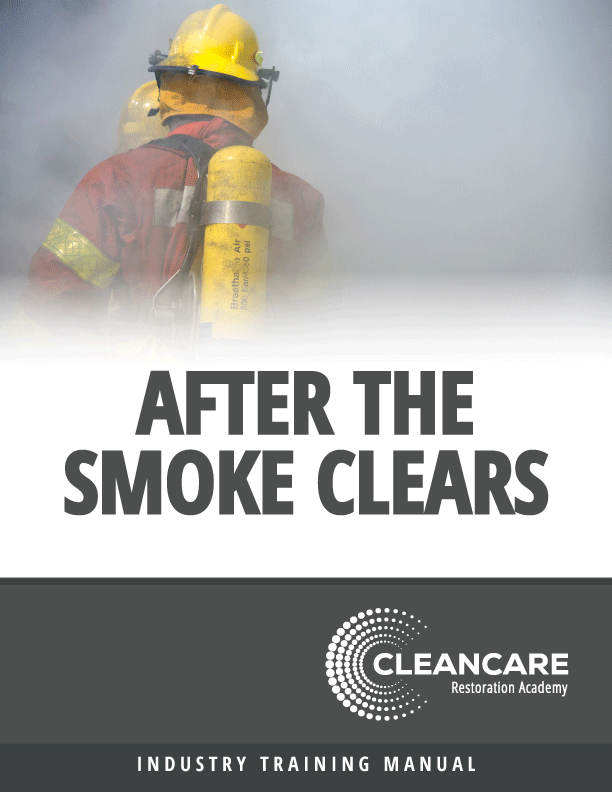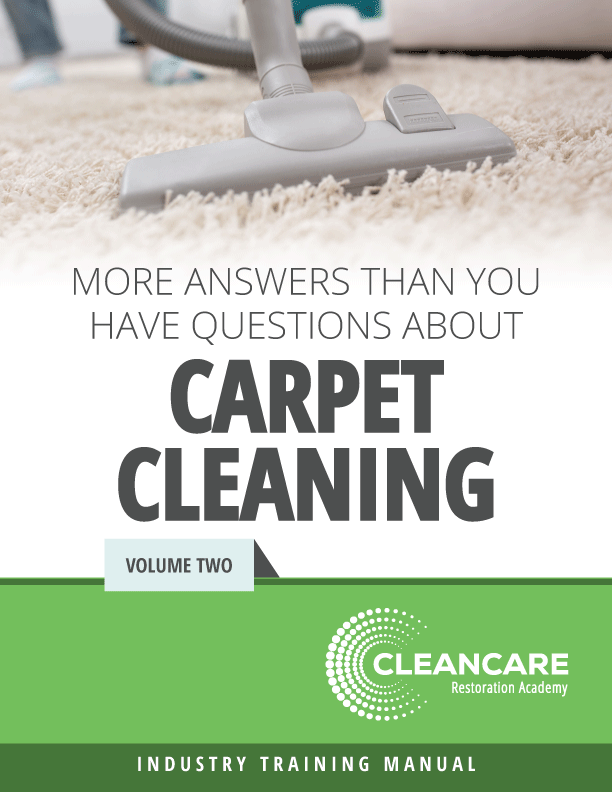Is It Science, Junk Science or Just Plain Fiction?

Starting a conversation with a silly question can be interesting. For example, let’s suppose I ask you, “Is drinking water safe?” or “Are plastic buckets and toothbrushes dangerous?”
- Drinking excessive amounts of water can be hazardous or fatal because of hyponatremia, or “insufficient salt in the blood.”1
- In the U.S., since 1984 more than 327 children have drowned in buckets containing water or another liquid. It is estimated that 30 children continue to perish this way each year.2
Even with the best intentions, preparation and training accidents, sometimes serious accidents happen. The reason that these statements seem farfetched and statistics seem outlandish is that common sense does, or should, tell us certain things about the world around us. Common sense should also guide our use of the materials on the planet as we go about our day to day lives. We know that certain things require certain skill and training to use safely but that no amount of skill or training can guarantee that anything will ever be devoid of risk.
As obvious as it may seem, folks in the cleaning and insurance repair field can be cornered by questions about whether a structural drying device, cleaning product or regimen, odor control methodology or infection control practice is safe. Safety is important, of course, and while we can always improve methods and materials to make anything safer than it is now; it is nevertheless beyond human ability to wring the last traces of danger out of anything. The insistence of absolute safety has allowed misinformation to creep into our daily practices. Later we will consider how the green movement has done much the same thing.
Science
Science can be defined as a method of learning about the physical universe by applying principles of the scientific method, which includes making empirical observations, proposing hypotheses to explain those observations, and testing in valid and reliable ways; and also refers to the organized body of knowledge that results from scientific study.Junk Science
What exactly is junk science? In a word, fraud. In a sentence, it’s faulty scientific data and analysis used to advance a special interest. 4 Junk science is a purposeful abuse of science by individuals or organizations with vested interest.5Junk science often targets our emotions and fears. The media have used junk science as a source for sensational headlines and to build audience for their programming. Personal injury attorneys have used junk science to confuse juries into awarding huge settlements. Social activists have used junk science to achieve social and political change. Government regulators have used junk science to expand their authority and increase their budgets. Businesses have used junk science to badmouth a competitor’s products or to make untrue statements about their own products. Politicians have used junk science to ingratiate themselves with special interest groups or to be “politically correct.” Individual scientists have used junk science as the means to seek fame and fortune. Individuals who are ill (real or imagined) have used junk science to blame others for responsibility for their illness.

A Discussion About Safety
Ready for a specific example? Thought so. Let’s consider the safety of common chemical products. A common method to expressing hazard or toxicity of a chemical is the so-called “LD50.” A measure of acute toxicity of chemicals developed in 1927, LD stands for “lethal dose,” the amount of a substance which, when administered to test animals, usually rats or mice, causes the death of half of them. It is expressed as a weight of the chemical administered per kilogram of body weight of the test animal. The higher the number, the larger the dose of the material required to cause death. The LD50 for table salt is 4,000, while the LD50 for botulism toxin is 0.00001. A single gram of botulinum toxin, if dispersed and ingested, could kill 20 million people. These numbers should not surprise. After all, we eat salt, though perhaps too much, while everyone knows that botulism is an extremely dangerous toxin.At this first glance, we might say that we don’t worry about salt but would never go anywhere near botulism toxin, yet the very popular “Botox” injections are exactly that! Why would we actually inject a highly toxic material into the body? The reason is simple: skilled practitioners can use the product to produce the desired effect with very little risk (notice we do not say zero risk).
It's a Tie
According to Stephen Gilbert’s book A Small Dose of Toxicology -The Health Effects of Common Chemicals, both DDT and aspirin have the same LD50: 250. Due to what they have been told most people would probably falsely consider DDT the most horribly dangerous material ever to have come near their hometown. They are likely unaware that DDT is credited with saving 75 million lives and that the scientist who discovered its insecticidal properties won the 1948 Nobel Prize for physiology (medicine).These same people may have a bottle of aspirin in the home, the desk at the office, or in the family car. Why? They perceive the risks and benefits of both substances differently. Our beliefs and perceptions are often based on what we read, what we hear and what we are taught in school. Be cautious; others for their own selfish reasons are constantly trying to manipulate our minds and our feelings.
Laboratory Rodents Aren't People
Mammalian laboratory animals aren’t people. Laboratory animals are different from people in ways both obvious and not. Warfarin is an effective anticoagulant (blood thinner). As a rodenticide, Warfarin has proven to be very effective in decimating localized rat infestations. Warfarin is also widely prescribed for humans to prevent heart attacks, strokes, and blood clots in veins, arteries and lungs. Warfarin is lethal to rats because rats cannot vomit to purge their bodies of the substance. It’s bad science to simply assume that chemicals have the same affects on laboratory rodents and humans. Too much of any substance will undoubtedly have an effect. It shouldn’t be a surprise that 85% of all chemicals tested by the U.S. Government’s National Toxicology Program were either carcinogenic or anti-carcinogenic at some data collection point during testing.6 Purveyors of junk science rely on your not knowing that exposure isn’t toxicity. So, watch out for junk scientists who claim that humans are at risk because mice were given mega-doses of some chemical.Chemical manufactures and blenders aren’t sadists taking pleasure in the torture and destruction of laboratory animals. The cruel and expensive toxicology testing on laboratory animals is government mandated. Conversely, the “Not Tested On Animals” and “Cruelty Free” statements found on some product labels may be the result of cost-savings decisions as opposed to the conscious decision to show mercy to animals.

Route of Exposure
The route of exposure, a.k.a. the exposure pathway, is the way people (or other living organisms) come into contact with a hazardous substance. Three routes of exposure are breathing (inhalation), eating or drinking (ingestion), or contact with the skin (dermal contact).Exposure Isn't Toxicity
We live in a world in which exposure to chemicals is unavoidable. Chemicals are found in the air we breathe, the food we eat, the water we drink, the professional products we use in the course of our business activities and in the buildings in which we work. A fundamental principle of toxicology is that “the dose makes the poison.” Two or three aspirins will cure your headache; 200 will kill you. Don’t believe junk scientists who claim that “any exposure is poison”.7According to medieval physician Paracelsus, “All substances are poisons, there is none which is not a poison. The right dose differentiates a poison and a remedy.” Throughout history the scientific fields of toxicology and pharmacology have been so inseparably interwoven that a serpent coiled around a staff symbolizes Asciepius, the Greek god of medicine. You likely know that arsenic is a poison; it also is a pharmaceutical. So it’s not only too much of a bad thing which can cause problems, but too much of a good thing as well. Large doses of vitamins can damage the liver and kidneys. Even oxygen can be hazardous: “Oxygen is the ultimate toxin.” “The biological price of breathing is aging.”8
Also consider that, “Exposure to chemicals both natural and synthetic is an unavoidable and inescapable condition. The good news is that no observable harm is caused by the vast majority of exposures to chemicals. Short of poisoning, chemical exposures are essentially harmless. The bad news is that the proponents of junk science don’t want you to know that. They want you to believe that your health is in jeopardy unless you live in a pristine environment, consume “natural” or “organic” products, and avoid all exposure to manmade chemicals. Use of chemicals does not equate to exposure to them, much less dangerous exposure. If pesticides are used according to directions, exposure is minimized if not eliminated.”9

Heightening Awareness vs. Lowering Awareness
While waitresses, maids and janitors quietly go about their daily business of cleaning, deodorizing, sanitizing and disinfecting schools, institutions, healthcare centers, and lodging rooms seemingly under the radar of governmental regulators, hysteria over “toxic mold” has placed remediators and their work processes onto the radar screens of governmental regulators. Remediators are challenged by a “new and heightened awareness” to the potential risks posed to humans, pets and the environment by “antimicrobial pesticides” used as components of water restoration and mold remediation.Consumers routinely buy and use products they consider to be safe, including disinfectants, sanitizers, insecticides, cleaners, toilet bowl cleaners, drain openers, etc. Most consumers know that the professional strength insecticides and herbicides used by the pest control and lawn-care firms they hire are “restricted-use pesticides” unavailable to consumers. It’s understandable that consumers would misconstrue the antimicrobial products used by remediators wearing Tyvek overalls and respirators as “super powerful professional-strength chemicals” when in fact nothing prevents homeowners from purchasing and using the same products.
Some remediators are concerned about employee exposure to antimicrobial products. Remediation workers often wear PPE to protect them from exposure to incident-related contaminates, and engineering controls such as negative pressure ventilation and air scrubbers provide workers with multiple layers of occupational protection, as risk to workers from antimicrobial products is actually very low. While unduly cautious about antimicrobials, most remediators are unmindful of the other cleaning and redecorating materials being used, which often are more hazardous than the antimicrobials.
By calling customer attention to the antimicrobial products they plan to use by referring to them are “biocides” and requesting signatures on consent forms and waivers prior to product application, remediators needlessly raise awareness and frighten customers into believing that antimicrobial application is overly hazardous, so it’s easy to see how they get into trouble. Consider:
- The active ingredients in all antimicrobials are thoroughly tested for multiple routes of exposure and multiple aspects of toxicity. The actual formulations are then tested for efficacy and toxicology. The U.S. EPA oversees every aspect of the label instructions and claims and even approves the suppliers for all the active ingredients.
- The disposal of every material inside a building that has had any contact with smoke, sewage or bodily fluids would be so expensive and damaging to the environment that our society wouldn’t survive. Remediation is essential to the environment and to the economy.
- The risk posed by an antimicrobial product is immeasurably less than the known threat posed by the pathogenic microbial contaminant the antimicrobial will kill and/or prevent from spreading.
- The same active ingredients used in some antimicrobial products are also used medicinally and to protect food after harvest.
- Both the active ingredient in antimicrobial and its concentration might be identical to that found in the cleaner used by the homeowner to clean and disinfect their kitchen, nursery and bath.
- The client often has inherently more hazardous materials under their kitchen sink, in their laundry room, basement or garage.
- Allow the client to sniff-test products before they are used on the premises.
- Provide the client with a choice of both fragrance-free and fragranced product.

Choose Your Weapons
One antimicrobial product doesn’t fit all water-damage situations. Concentrated products often offer alternative dilution rates to adjust to a wide variety of situations. In sewage intrusions, relying on products that simultaneously clean and disinfect has proven efficient and cost effective. Ready-to-use products offer convenience and eliminate risks associated with improper mixing. The residual bacteriostatic and fungistatic properties offered by products may or may not be desirable. There are situations where either a fragrance-free or fragranced product would be preferable.Here’s another example: Essential oils are concentrated, non-water soluble liquids which contain volatile aroma compounds from plants. Essential oils are often simply known as the “oil of” the plant material from which they are extracted, such as Oil of Thyme. An oil is “essential” in the sense that it carries a distinctive scent, or essence, of the plant. Essential oils are expensive due to the large amounts of plant materials required and the distillation process used to extract them.
Oil of Thyme contains two phenol chemicals – thymol and carvacrol – that account for its antimicrobial and medicinal value. Thymol is also manufactured synthetically. Oil of Thyme and its constituents are used in a variety of useful applications in home and industry. When used properly, it can provide benefits. Consider these excerpts from the Material Safety Data Sheets for thymol and caracrol.10

Contact with skin causes severe irritation.
Inhalation
Causes irritation to the respiratory tract. Symptoms may include coughing, shortness of breath. May be absorbed into the bloodstream with symptoms similar to ingestion.
Ingestion
Harmful if swallowed. Produces abdominal pain, nausea, vomiting, central hyperactivity (e.g., talkativeness), and occasionally convulsions, coma and cardiac and respiratory collapse. Oils and alcohols may promote absorption into the body. May cause liver or kidney damage.
This substance is classified as dangerous according to EU Directive 1999/45/EU.
As you see, according to the MSDS the materials can be harmful. Does this mean that Oil of Thyme, thymol and carvacrol are dangerous and should never be used? Of course not; experience shows that this is not true. We have to use the material properly and in the proper amounts.
To extend the example just a bit further, consider the demeanor of a power-tool salesman at a building supply center. He explains all of the features and benefits of a power saw and doesn’t try and scare or talk customers out of a buying decision by explaining that the saw can amputate fingers or electrocute the user if it is used in the rain.
Suppose a customer were to ask whether the dehumidifier that you’ve just installed in the basement is safe. They might ask, “Is there any chance that it could, leak, start a fire, trip a circuit breaker, or leak refrigerant into the environment?” You might say that the machine has been properly engineered, thoroughly tested in a lab, proven in many applications, and will be installed with your usual professionalism. You might wonder, though, what was troubling that customer. Why would we approach a cleaning, odor control or disinfectant product any differently? These materials, too, are thoroughly tested, well engineered, and used with professionalism.

The Green Movement
There is something about the trend toward “green” products and ways of doing things that strikes an instinctive cord. After all, we know we don’t like wasting things and we know pollution is both unpleasant and dangerous. We also know that landfills do have a finite capacity.In the effort to make a more pleasant, more sustainable world, however, we can get caught up in concepts that seem appealing but do not withstand logical examination.
Humans have used plants for food, shelter, clothing, fuel and as a source for chemicals and medicines since the beginning of time. Plants provide for us very nicely. But in the haste to embrace environmentally preferable practices, assumptions are sometimes made that could have serious consequences, e.g. that if a material is “natural,” or “plant-derived” then it must be completely safe and have no environmental downside.
Thousands of organic, naturally derived materials are extremely dangerous. Consider hemlock ingested by Socrates to commit suicide. Strychnine, red squill, pyrethrum, limonene, linalool, neem, rotenone, ryania, sabadilla and nicotine are naturally occurring botanical pesticides. Many botanical allergens exist: ragweed, pollen, poison ivy and peanuts (to some) to name a few. Consider the health costs attributed to botanicals such as tobacco, marijuana and opium.
These materials are all natural and botanical. They can be used for our benefit if properly used. They can be deadly if not used properly. How these materials are sourced isn’t the issue: their intelligent use is. Sustainability. Ultimately, every substance we use for anything originally came out of the ground. Since we cannot create atoms, we need to use them properly. Since we cannot destroy atoms, we need not worry about losing them.
The concept of sustainability has merit, but products that are “plant derived” or “organic” will not necessarily improve our stewardship of the planet. Lauren Thaman, public affairs specialist for Proctor & Gamble Fabric Care, made this observation: “We’re committed to having a science-based approach to sustainability. Just because it’s natural doesn’t mean it’s sustainable. We have taken a life-cycle analysis approach to ensure that we are making claims that are meaningful and measureable.” Or consider this observation from Francois Scheffler, industry marketing manager for care chemicals at BASF: “Using a synthetic product that reduces water or energy use by the consumer is as equally sustainable as a product based on a renewable vegetable resource.”11

The vast majority of the ecological impact cleaning products have on the environment is related to the packaging. We can point to countless examples of natural products that were replaced by synthetics in order to foster good management of resources. For example, billiard balls and piano keys were once made of ivory. Consider also the impact that promotion of ethanol, a renewable resource, had on food prices just last summer.
Does this mean that the trend towards green products is misplaced? Does it mean that we should never consider naturally derived materials? Of course not. However, we must remember and communicate several important principals to our customers:
- This world will never know the day when human activity is completely without risk. While we can always improve how we do things, safety is a journey, not a destination.
- Everything we do will always have some impact on the world around us. “Green-ness” is also a journey, not a destination.
- Our decisions should be based on sound thinking and on the best information available to us at the time. Decisions that are primarily driven by emotion and by simplistic terms will often go astray.
- It is impossible to eliminate all risks.
- Exposure doesn’t mean toxicity. No substance is nontoxic. The dose makes the poison.
- The scientific method is a disciplined and well-established process.
- Junk science is dishonesty aimed at our emotions and fears.
- Humans and laboratory animals are different.
- Synthetic products can also be sustainable.
- Plant-based or naturally derived doesn’t always mean safer.
- The safest remediation products to use around chemically sensitive individuals are fragrance-free products. Offer the client a choice between fragrance-free and fragranced products. Allow the client to sniff test products before they are used on the premises.
- Are they really trying to save the world or do they have an ulterior motive?
- It’s up to you. Your skills, honed by both your professional and safety training, your pride in your trade will make both the world and the jobsite safer for both you and your customers.
1 June 21, 2007 SciAm.com Strange but True Drinking Too Much Water Can Kill
2 National SAFE KIDS Campaign (NSKC). Drowning Fact Sheet. Washington, DC 2004
3 Dr. Brockton J. Hefflin, U.S. Food and Drug Administration’s Center for Devices and Radiological Health
4 Junk Science Judo, Self Defense Against Health Scares & Scams by: Steven J. Milloy
5 Junk Science Judo, Self Defense Against Health Scares & Scams by: Steven J. Milloy
6 Junk Science Judo, Self Defense Against Health Scares & Scams by: Steven J. Milloy
7 Junk Science Judo, Self Defense Against Health Scares & Scams by: Steven J. Milloy
8 Michael Trush, toxicologist at Johns Hopkins Bloomberg School of Public Health
9 Junk Science Judo, Self Defense Against Health Scares & Scams by: Steven J. Milloy
10 J.T. Baker MSDS Number: T3328 Effective Date: 07/16/07, Carvacrol MSDS Millenium Specialty Chemicals Inc. Lyondell European Headquarters
11 Michael McCoy, “The Greening Game”, Chemical & Engineering news: January 26, 2009 Volume 87, Number 4 pp. 13-19
Looking for a reprint of this article?
From high-res PDFs to custom plaques, order your copy today!






